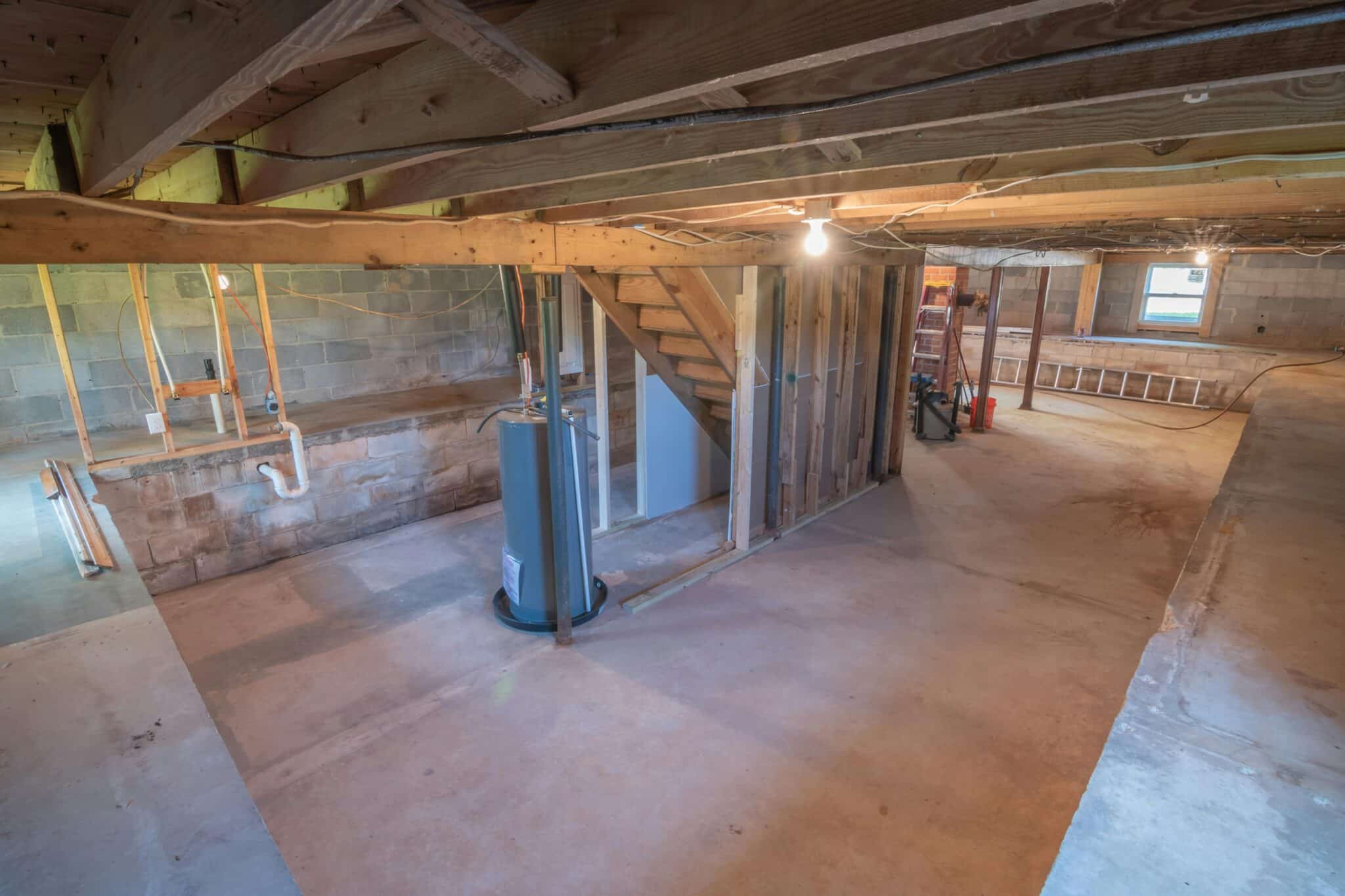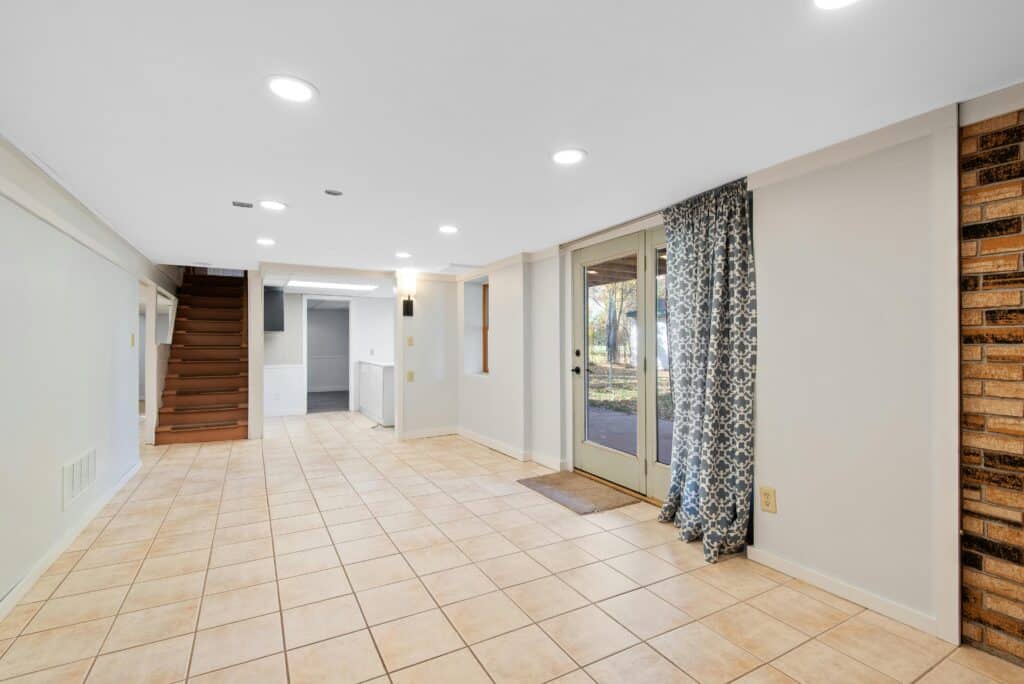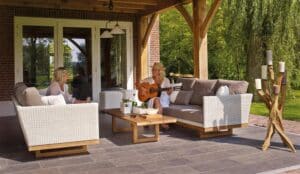The ROI of Basement Remodeling
If you’re looking to boost the value of your home while gaining more usable space, look no further than the basement. Finishing a basement offers one of the highest returns on investment in home remodeling, with an average ROI of up to 86% according to the 2022 Remodeling Impact Report by the National Association of Realtors.
For many homeowners, an unfinished basement is a missed opportunity. It’s square footage that’s already part of your home’s footprint—why not make it livable, functional, and valuable? Whether your goal is to increase resale value or simply enjoy more room for daily life, smart basement finishing ideas can help you get the most out of your investment.
From creating extra bedrooms and bathrooms to improving comfort with radiant heat and soundproofing, here are six essential upgrades that deliver both practical benefits and long-term home equity.
Idea #1: Frame and Drywall for Functional Rooms
The first step in any finished basement project is creating a usable structure—and that starts with framing and drywall. These elements transform an open, concrete-walled basement into a space that feels like the rest of the home.
Framing and finishing basement walls opens the door to all kinds of uses:
- Extra bedrooms for growing families
- A home office or study nook
- A recreation room or home theater
- Even a separate rental apartment for passive income
Once walls are framed and drywalled, the space becomes flexible and far more valuable. If resale is a goal, adding a legal bedroom (with an egress window) and bathroom can significantly improve your ROI on finished basement upgrades.
If you’re looking for inexpensive basement finishing ideas, stick to open-concept framing and minimal partitioning to cut costs. But for full value, finishing your basement as a multi-room living space—even if you don’t furnish every room right away—will help you get the most from your investment down the line.
Idea #2: Add Plumbing for a Basement Bathroom
Once the framing is complete, one of the most valuable additions to a finished basement is a bathroom. Whether you’re turning your basement into a guest suite, family lounge, or rental unit, plumbing a bathroom provides lasting convenience and marketability.
Adding plumbing during construction is far easier (and more affordable) than retrofitting it later. Even a half-bath increases functionality dramatically—and if you’re finishing the space into an apartment or extended living suite, a full bathroom is a must.
Including a bathroom also allows your basement to function more independently. Guests or tenants won’t need to go upstairs, and you can dedicate the basement to hosting, relaxing, or working without interruptions.
Working with experienced basement finishing contractors ensures proper planning for drainage, ventilation, and permits. It also gives you options to future-proof your space—even if you only install the rough plumbing now and complete the bathroom later.
Idea #3: Electrical Upgrades for Lighting and Flexibility
Lighting can make or break a basement renovation. Since most basements lack abundant natural light, it’s essential to install well-planned electrical and lighting upgrades to make the space feel warm, bright, and livable.
Start with overhead lighting: recessed lights are a great choice in basements because they don’t intrude on low ceilings. Add dedicated outlets in areas where you plan to place TVs, desks, gaming equipment, or small appliances.
If you’re splitting the basement into multiple rooms, plan for separate switches and circuits to allow each space to function independently. Dimmer switches are another worthwhile addition—they make entertainment or home theater spaces feel cozy while preserving brightness in work or utility zones.
It’s also a good time to consider smart lighting systems, which offer convenience and energy savings with app-controlled dimming or scheduling.
No matter your vision, safe, code-compliant electrical work is essential—and best handled by professionals. It’s a foundational piece of any finished basement plan.
Idea #4: Moisture-Resistant Flooring for Function and Style
Flooring is where practical function meets personal style, especially in a basement where moisture and temperature control are concerns. Choosing the right materials is key to long-term durability and comfort.
For most basements, moisture-resistant options like luxury vinyl plank (LVP) or ceramic tile are the go-to choices. LVP mimics the look of hardwood but is softer underfoot, water-resistant, and easy to install, making it one of the most popular inexpensive basement finishing ideas.
For a sleek, durable surface, wood-look tile is another favorite. It offers the natural appearance of hardwood with the water resistance of tile, and it pairs perfectly with radiant heating (more on that next).
Avoid traditional hardwood or carpet unless you’re confident in your basement’s waterproofing. Even small moisture issues can lead to warping or mold over time.
Whether your design leans modern, rustic, or transitional, there are flooring choices that balance aesthetics with performance—making your finished basement both attractive and practical.
Idea #5: Radiant Heat for Comfort in Cooler Spaces
Basements naturally run cooler than the rest of the house, even when insulated. If you’ve chosen tile flooring for durability, you’ll want to consider installing radiant heat beneath the floors for added comfort.
Radiant floor heating systems use electric coils or hydronic tubes under the flooring to gently warm the surface. It creates a consistent, energy-efficient heat that eliminates the chill of tile or vinyl underfoot.
This upgrade is especially worthwhile in spaces you plan to use daily—like a home office, guest bedroom, or playroom. And for homeowners finishing a basement as a separate apartment, heated floors add luxury and help justify premium rental rates.
While radiant heating does increase upfront cost, it improves year-round comfort, lowers reliance on forced air, and can increase resale appeal—especially in colder climates.
Idea #6: Soundproofing for a More Peaceful Living Space
A beautifully finished basement isn’t complete without peace and quiet—and that’s where soundproofing comes in. Since basements sit below high-traffic living areas, footfalls, voices, and even appliance noise can disrupt the space below.
Soundproofing is often overlooked in basement wall finishing ideas and ceiling construction. But simple upgrades can make a big difference:
- Use insulation with acoustic properties in wall framing
- Install resilient channel systems before drywall to decouple noise
- Add acoustic ceiling tiles or drywall with noise-dampening backers
- Use solid-core doors to block sound between rooms
When finishing a basement ceiling, consider adding an extra drywall layer or drop ceiling system with acoustic tiles. These additions may not seem glamorous, but they significantly improve comfort, especially if you plan to use the basement as a home theater, recording studio, or rental space.
A quiet basement feels more like a natural extension of your living space—not a separate or second-rate area.
Partner with Honey-Doers to Maximize Basement Value
Finishing your basement is more than a renovation—it’s an investment in space, lifestyle, and home value. From framing and plumbing to radiant heat and soundproofing, each decision affects how well your basement supports daily life and boosts resale potential.
At Honey-Doers Remodeling, we specialize in helping homeowners transform their basements—turning dark, underused spaces into warm, functional extensions of the home. Whether you’re planning a full suite, a media room, or just need help choosing the right basement finishing ideas, our team is here to guide you from design through construction.
Contact us today to learn how we can help you unlock the full potential—and ROI—of your basement.






